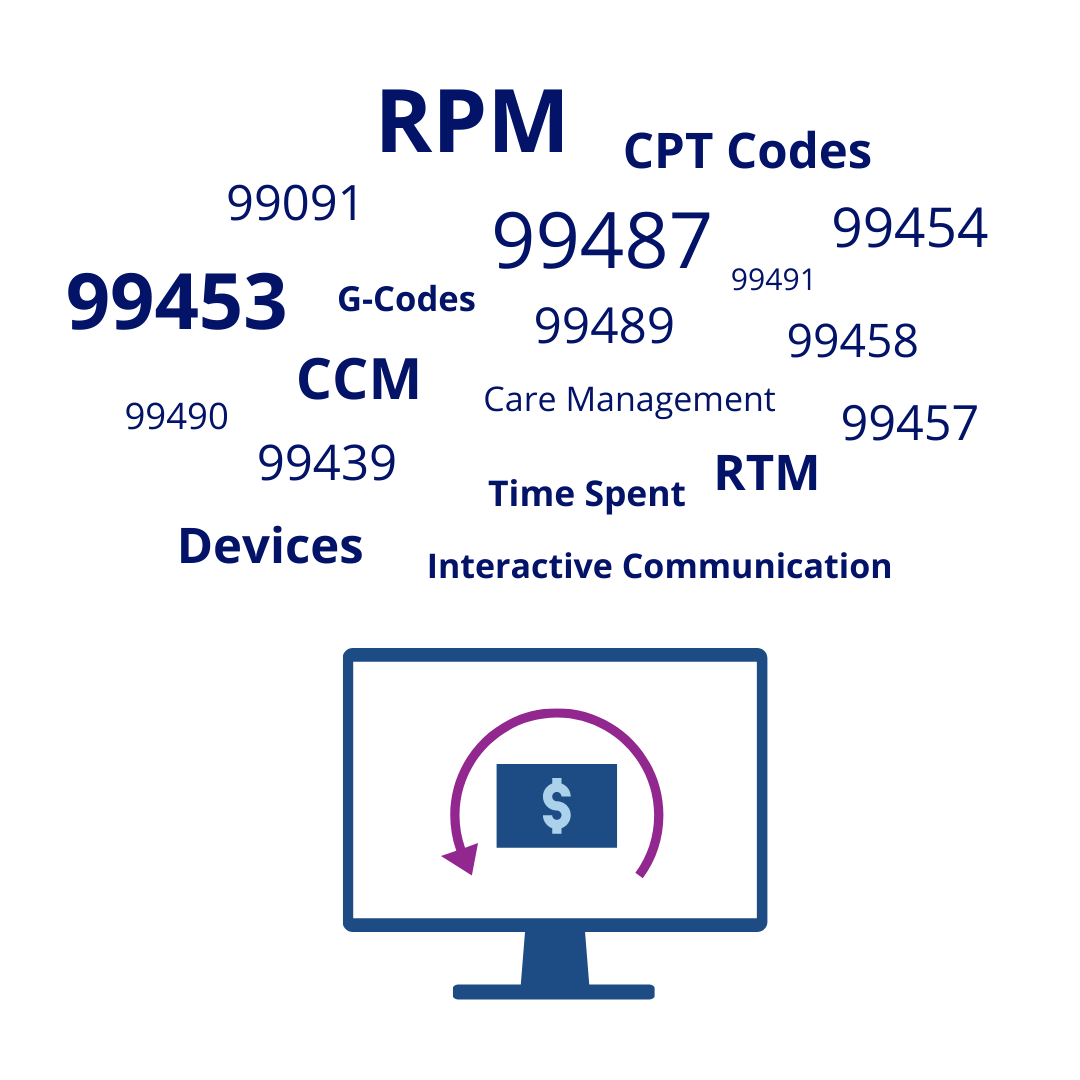The Centers for Medicare & Medicaid Services (CMS) has released its final rule for Medicare payments under the Physician Fee Schedule (PFS), introducing significant changes that will impact healthcare providers across the country. These updates, effective on or after January 1, 2024, underscore the ongoing expansion of telehealth and remote patient monitoring (RPM) services, reflecting the increasing role of technology in healthcare delivery.
To help you stay informed and prepared, we've compiled the eight key updates you need to know:
1. Established Patient Requirement
There have been changes to the telehealth billing guidelines related to established vs new patients.
Here’s what changed:
New Patient Evaluation and Management (E/M) or similar services are needed prior to starting patients on RPM services; this is to discuss the care plan.
Exceptions:
Patients who received RPM services during the Public Health Emergency (PHE) do not qualify for this rule as they already have an established relationship with the provider or group.
The established relationship rule does not apply to remote therapeutic monitoring (RTM) reimbursement.
2. 16-day Data Collection Requirement
There have been changes to the 16-day billing guideline for remote monitoring data collection.
Here’s what changed:
- Data collection of at least 16 in a 30-day period (episode of care days, NOT calendar month days) for CPT codes 99453 and 99454
- The 16-day data collection rule does not apply to time spent codes 99457 or 99458
- The two-day rule during the Public Health Emergency is exhausted
3. Clarity on RPM and RTM “Time Spent”
CMS clarified requirements for time spent billing guidelines.
Here’s what changed:
CMS provided clarity for time spent codes 99457, 99458, 98980, and 98981. 16-day data collection does not apply to these codes as time spent is defined as treatment management.
These codes have a billing guideline of a 30-day calendar month.
4. Only One Provider Can Bill for RPM and RTM Codes
CMS made changes to the practitioner guidelines for telehealth billing and reimbursement.
Here’s what changed:
RPM Device CPT codes 99453 and 99454, or RTM codes 98976, 98977, 98980, and 98981 are only able to be billed by ONE practitioner in a 30-day period (episode of care, NOT calendar month).
This means that if a patient and another provider are billing for RPM or RTM services in the same month, the provider that gets the claim submitted first will be adjudicated, and all other provider claims will be denied.
5. RPM/RTM Concurrent Billing with Other Services
CMS clarified requirements on concurrent billing for other services.
Here’s what changed:
RPM and RTM can not be billed together in the same month, but the following services can be billed with either RPM or RTM concurrently:
- Chronic Care Management (CCM)
- Transition Care Management (TCM)
- Behavioral Health Integration (BHI)
- Principal Care Management (PCM)
- Chronic Pain Management (CPM)
6. Billing RPM Services During Global Surgery Period
Medicare defines the global period as that period of time during which a physician may not bill for related office visits. The 2024 Physician Fee Schedule clarifies how/when RPM services can be billed during the global period.
Here’s what changed:
Providing RPM or RTM services is permitted if the billing provider of these services is not the provider receiving the global service payment.
If the patient was receiving RPM or RTM services prior to the surgical procedure, CMS will pay for the RPM or RTM services outside of the surgical global period.
7. FQHCs and RHCs – Care Management CPT Code
With the 2024 Physician Fee Schedule updates, there are new reimbursement opportunities for FQHCs and RHCs.
Here’s what changed:
FQHCs and RHCs may receive reimbursement from CMS for RPM or RTM services (not both) billing with Care Management CPT Code G0511. This code can now be billed multiple times in a calendar month.
G0511 – 2024 reimbursement rate $72.98
8. New Cost Fee Structure
There have been changes to the cost fee structure, resulting in slightly lower reimbursement rates for individual CPT Codes for Remote Patient Monitoring (RPM), Chronic Care Management (CCM), and Remote Therapeutic Monitoring (RTM).
Here's what changed:
| RPM CPT Code | 2023 Rate | 2024 Rate | Difference |
| 99453 | $ 19.32 | $ 19.65 | $ 0.33 |
| 99454 | $ 50.15 | $ 46.83 | $ (3.32) |
| 99457 | $ 48.80 | $ 48.14 | $ (0.66) |
| 99458 | $ 39.65 | $ 38.64 | $ (1.01) |
| 99091 | $ 54.22 | $ 52.71 | $ (1.51) |
| CCM CPT Code | 2023 Rate | 2024 Rate | Difference |
| 99437 | $ 59.98 | $ 58.62 | $ (1.36) |
| 99439 | $ 47.44 | $ 47.16 | $ (0.28) |
| 99487 | $ 133.18 | $ 131.97 | $ (1.21) |
| 99489 | $ 70.49 | $ 71.06 | $ 0.57 |
| 99490 | $ 62.69 | $ 61.57 | $ (1.12) |
| 99491 | $ 85.06 | $ 83.18 | $ (1.88) |
| RTM CPT Code | 2023 Rate | 2024 Rate | Difference |
| 98975 | $ 19.38 | $ 19.65 | $ 0.27 |
| 98976 | $ 55.72 | $ 46.83 | $ (8.89) |
| 98977 | $ 55.72 | $ 46.83 | $ (8.89) |
| 98980 | $ 50.18 | $ 49.78 | $ (0.40) |
| 98981 | $ 40.84 | $ 39.30 | $ (1.54) |

Expert Reimbursement Support from Health Recovery Solutions
Navigate the ever-evolving world of telehealth reimbursement with expert guidance from our in-house reimbursement specialists. Our team will help you claim reimbursement from CMS, commercial payors, partners, and private pay sources.